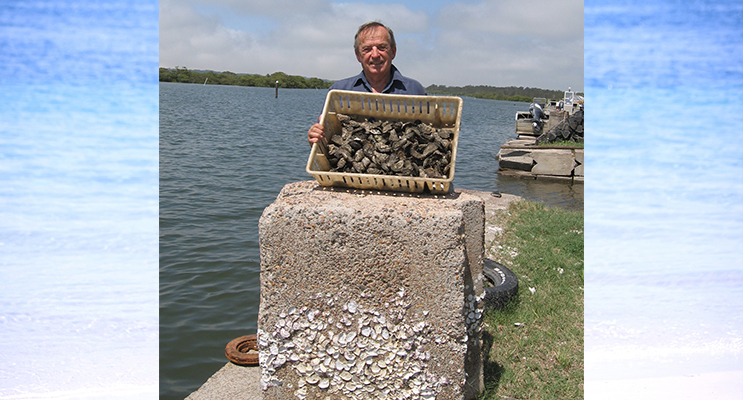
PROBLEMS with oyster spat production in Tasmania and South Australia could very well be a bonus for Port Stephens growers.
Local farmer Richard Hamlyn-Harris said that a national shortage was looming and this could see the price rise

“substantially”.
“After the problems of the past few years, we need a welcome boost to our morale,” he said.
“Currently, the wholesale price is around $10 per dozen and in my case the demand was so strong that I ‘ran out’ over
Christmas.”
“Pacific oysters are in recovery mode and we are hoping for a good crop moving into winter. Warm sea surface currents
are suspected of causing a high degree of mortality in previous years as they prefer colder waters,” he said.
“February will be the month to watch and if they [the Pacifics] make it through the hot weather it should be plain sailing.”
“Port Stephens is free of the POMS virus although it devastated oysters in the Hawkesbury and Georges River estuarine
systems in Sydney. Fisheries are hard at it breeding an oyster which is POMS resistant,” Mr Hamlyn-Harris added.
“There is also an untapped niche market for oysters with a story attached. In the swanky high priced capital city
restaurants, owners like to be able to trace the history of their oysters right back to the very farm and estuary in which
they were grown. Their diners are interested in this type of information. Some of us are exploring this option for
marketing.”
“The creative advertising agencies will be suggesting special names for our produce sold this way.”
“One little pest which is giving us problems is the flatworm. It is shaped somewhat like a flounder.”
“It weevils its way into our oysters while they are feeding, kills them and has a feast. Fortunately, they can’t tolerate fresh
water and a good downpour in the catchment area will keep them contained,” he said.
By Geoff WALKER
